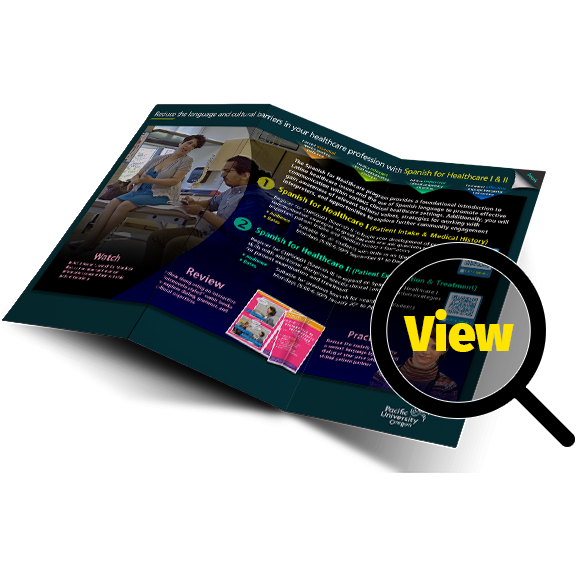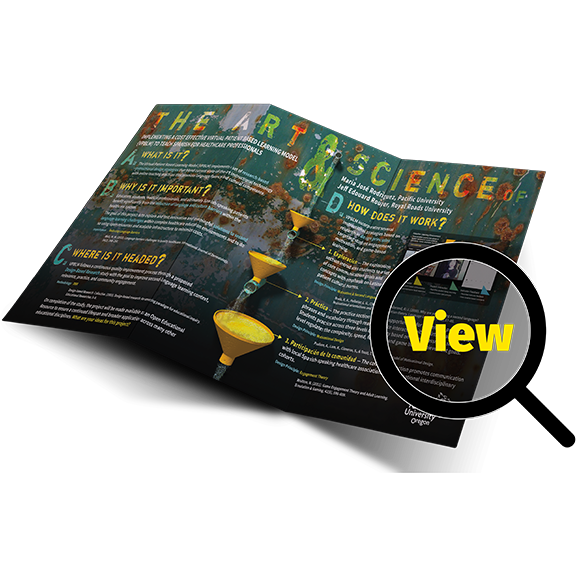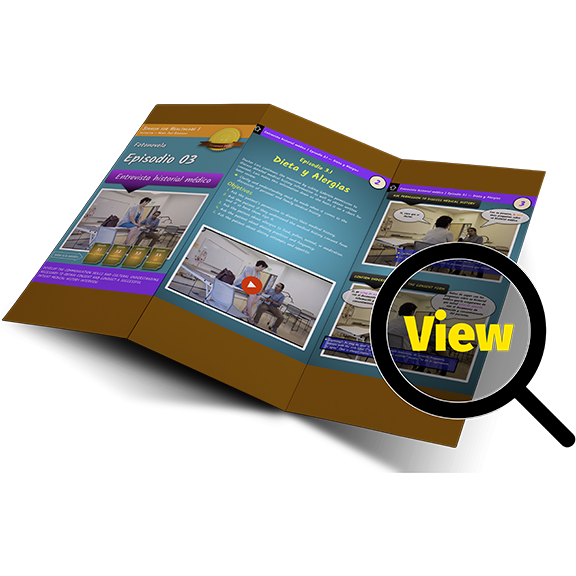
RouyerDesign

Welcome to RouyerDesign. Here, you will find updates regarding my research and development in conversational AI systems for use in bilingual education for healthcare professionals.
My mission is to reduce healthcare inequities among vulnerable Latino communities through Pacific University's Spanish for Healthcare program. By leveraging innovative technologies like virtual patient avatars and interactive videos, I provide students with critical cultural understanding and Spanish communication skills, empowering them to better serve the Latino community.
- My Projects — Below you will find a list of projects- all in a state of continuous research and development. The following is an intro video to my Virtual Patient system. At the end of this page you can view a demo of the Virtual Patient in action.
- My Background — View My CV for an overview of my professional qualifications,
education, experience,
publications, and other works. Feel free to connect with me through LinkedIn
for more information.
Jeff Rouyer
MA, Learning & Technology, Royal Roads University
— Instructional Systems Designer, Mt. Hood Community College, Gresham Oregon
— Adjunct Instructor and Instructional Media Development, Pacific University, Hillsboro Oregon
What is the need?

Language barriers in healthcare settings can limit access to quality care and compromise patient safety, particularly for patients with limited English proficiency. To address this issue, we aim to develop innovative solutions for second language learning within complex healthcare education environments, ultimately promoting bilingual interactions between providers and patients, and advancing cultural competence among healthcare professionals.
After several years of program implementation, we've identified four key needs in language learning. This project aims to address these challenges through a systematic research design process, with the goal of creating more contextualized, relevant, practical, and community-driven solutions for second language learning in healthcare settings.
- Relevance — Spanish for Medical Professionals program serves eight disciplines. Unfortunately, the majority of textbooks offer a one size fits all curriculum that expose students to a range of medical vocabulary and practices not relevant to their professional discipline.
- Engagement — Second language instructional activities focus disproportionally on written response which is important, but oral repetition is needed for strengthening listening and speaking activities.
- Community — Interaction with Virtual Patients offer advantages of instructional flexibility in a low anxiety environment, however the practical application of language skills have to be development with direct communication with Spanish speaking communities.
My research

My research is focused on exploring innovative and cost-effective solutions to language learning that leverage state-of-the-art instructional technology and current developments in conversational AI agents, large language models, and voice recognition systems. The goal is to create a system that is engaging, motivating, and effective in promoting language fluency and cultural competence in a complex healthcare education environment. Here you will find links to my research paper, poster presentation, and other publications.
-
2018 — Thesis: “Virtual Patient Learning Model…”
― DOI: dx.doi.org/10.25316/IR-1529, Royal Roads University.
Abstract: Spanish-speaking patients with limited English face barriers to quality healthcare. To address this, I developed a Virtual Patient Based Learning Model (VPBLM) for healthcare professionals learning Spanish. The VPBLM uses voice recognition and virtual patients, combined with engagement theory and ARCS motivation principles. Research shows the VPBLM effectively motivates students to learn Spanish and cultural competency, with potential applications in other educational contexts. - 1998 — Author: “Dynamic HTML Web Magic” ― ISBN-13: 978-1568304212, Hayden Books.
- 1998 — Contributing Author: "Dynamic HTML Unleashed, 2nd Ed." ― ISBN-13: 978-1575213538, Sams.net Publishing.
- 1994 — Contributed Content: "Technique, images, and animation" in "Modeling the Dream..." ― ISBN-13: 978-1878739674, Waite Group Press.
How does it work?

VPBLM integrates well into a complete teaching and learning experience and has been in use for over ten years. VPBLM incorporates several instructional strategies based on research in design principles targeting student engagement, motivation, and game-based learning. The system is designed to be used in conjunction with a complete Spanish for Medical Professionals curriculum that includes a textbook, online resources, and a community-based service learning component. It the current iteration, the Spanish For healthcare Professional Program at Pacific University is structured using the following learning strategies.
- Watch — Students are presented with real patient scenarios, along with a set of lesson outcomes which include important vocabulary, grammar, and cultural competency objectives. These scenarios are presented through videos by professional actors depicting real healthcare settings.
- Review — Each video is paired by an accompanying "fotonovela styled" comic book that students use to reference the video dialog, grammar, and cultural competency objectives in context of each scene.
- Practice — At this stage, students are ready to begin using the virtual patient system as a practice partner which allows them to customize the dialog to suit their needs and learning pace.
- Demonstrate — Working in groups, students extend their learning by generating their own clinician/patient dialog suitable to the healthcare profession they are studying. This dialog is then recorded and shared with the class for feedback and evaluation.
- Engage — When the opportunity arises, students work with community volunteers to practice their Spanish skills in a real-world setting. This is a critical component of the program as it allows students to connect with the community and apply their learning in a practical setting.
The Virtual Patient
The following video shows the virtual patient interaction in action along with option to customize the dialog, and control the speed and pace of the patients response. This system can be used in conjunction with any video capture tool, including FlipGrid, Teams for Education, or Zoom for further instructor analysis and feedback.
Where can this go?
The Virtual Patient Based Learning Module follows an instructional design process of continuous improvement, testing, and exploration. The system is poised to be expanded into other second language learning systems not limited to Spanish and can easily venture into other healthcare communication scenarios including gerontology, psychology, administration, front-desk, community healthcare workers, etc.